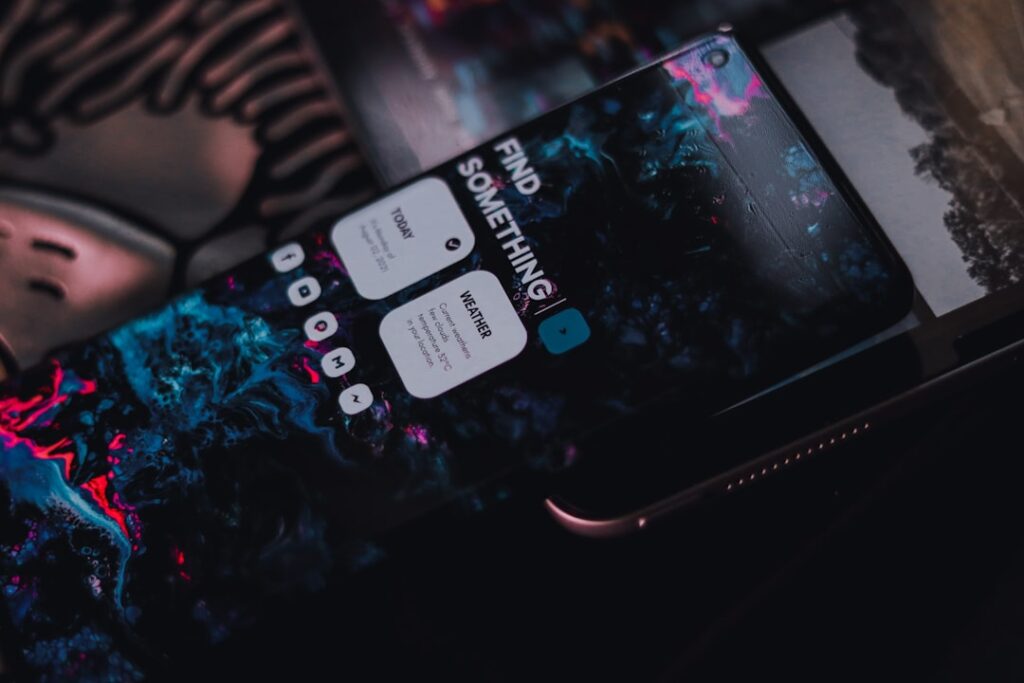As I delve into the world of web design, one of the most intriguing concepts I encounter is CSS variables, also known as custom properties. These variables allow me to store values that I can reuse throughout my stylesheets, making my code more efficient and easier to maintain. The syntax is straightforward: I define a variable using the `–` prefix, followed by a name of my choice.
For instance, I might declare a variable for my primary color like this: `–primary-color: #3498db;`. This simple declaration opens up a world of possibilities for consistent styling across my web projects. The beauty of CSS variables lies in their dynamic nature.
Unlike traditional CSS properties, which are static once defined, CSS variables can be updated at runtime. This means that if I decide to change the primary color of my website, I can simply update the variable in one place, and all instances where it is used will automatically reflect this change. This feature not only saves me time but also reduces the risk of errors that can occur when manually updating multiple styles.
As I explore further, I realize that CSS variables can be scoped to specific elements, allowing for even greater flexibility in my designs.
Key Takeaways
- CSS variables allow for the creation of reusable values in CSS, making it easier to update and customize themes.
- Implementing CSS variables in theme customization can streamline the process and make it easier to maintain and update styles.
- CSS variables can be used to easily customize colors throughout a website, providing a consistent and cohesive look and feel.
- Utilizing CSS variables for font customization allows for easy updates to font styles and sizes across a website.
- Customizing layout with CSS variables can provide flexibility and consistency in the design of a website.
Implementing CSS Variables in Theme Customization
When it comes to theme customization, implementing CSS variables is a game-changer. I start by defining a set of variables that represent the core aspects of my theme, such as colors, fonts, and spacing. By organizing these variables at the root level using the `:root` selector, I ensure that they are accessible throughout my entire stylesheet.
For example, I might create variables for background colors, text colors, and even border styles. This structured approach not only enhances readability but also makes it easier for me to manage changes as my design evolves. Once I have my variables in place, I can easily apply them to various elements within my theme.
Instead of hardcoding values directly into my CSS rules, I reference my variables using the `var()` function. For instance, if I want to set the background color of my header, I can simply write `background-color: var(–header-bg-color);`. This method not only streamlines my code but also allows for quick adjustments.
If I decide to switch up the theme colors for a seasonal promotion or a special event, I can do so with minimal effort by updating the variable values.
Using CSS Variables for Color Customization

Color plays a pivotal role in web design, and utilizing CSS variables for color customization has transformed how I approach this aspect of my projects. By defining color variables at the outset, I create a cohesive palette that can be easily manipulated. For example, I might establish a set of variables for primary, secondary, and accent colors.
This way, when I want to change the overall look and feel of my site, I can do so by simply adjusting these variables rather than hunting down every instance of a specific color in my stylesheet. Moreover, CSS variables allow me to create themes that respond to user preferences or system settings. For instance, if I want to implement a dark mode option for my website, I can define separate sets of color variables for both light and dark themes.
By toggling between these sets based on user input or system preferences, I can provide a seamless experience that caters to individual needs. This level of customization not only enhances user satisfaction but also demonstrates my commitment to accessibility and modern design practices.
Utilizing CSS Variables for Font Customization
Font choices are another critical element of web design that can significantly impact user experience. By leveraging CSS variables for font customization, I gain greater control over typography across my site. Initially, I define variables for font families, sizes, weights, and line heights.
For example, I might create a variable for my primary font family like this: `–font-family-primary: ‘Helvetica Neue’, sans-serif;`. This approach allows me to maintain consistency in typography while making it easy to experiment with different styles. When it comes time to apply these font variables, I simply reference them in my CSS rules using the `var()` function.
This not only simplifies my code but also enables me to make global changes effortlessly. If I decide that a different font would better suit my brand identity, I can update the variable once and see the change reflected throughout my entire site. Additionally, by combining font variables with media queries, I can create responsive typography that adapts to different screen sizes and devices.
Customizing Layout with CSS Variables
Layout customization is another area where CSS variables shine. By defining layout-related properties as variables—such as spacing values for margins and paddings—I can create a more flexible and responsive design framework. For instance, I might establish a variable for my base spacing unit like this: `–base-spacing: 16px;`.
With this single variable, I can maintain consistent spacing throughout my layout by multiplying it as needed for different elements. Using these layout variables allows me to create a modular design system that is easy to adjust. If I find that my layout feels cramped or too spacious during testing, I can simply modify the base spacing variable and watch as all related elements adjust accordingly.
This adaptability not only saves time but also ensures that my designs remain cohesive and visually appealing across various screen sizes and devices.
Creating Dynamic Themes with CSS Variables

One of the most exciting aspects of using CSS variables is the ability to create dynamic themes that enhance user engagement. By allowing users to customize their experience—whether through color schemes or font choices—I can foster a sense of ownership over their interaction with my site. To implement this feature effectively, I start by defining a comprehensive set of CSS variables that cover all aspects of the theme.
Once these variables are established, I can use JavaScript to dynamically update their values based on user input. For example, if a user selects a new color from a color picker, I can capture that input and update the corresponding CSS variable in real-time. This immediate feedback creates an interactive experience that keeps users engaged and encourages them to explore different styles.
Additionally, by saving user preferences in local storage or cookies, I can ensure that their chosen theme persists across sessions.
Best Practices for Using CSS Variables in Theme Customization
As I continue to explore the potential of CSS variables in theme customization, I’ve identified several best practices that help me maximize their effectiveness. First and foremost, organization is key. By grouping related variables together—such as colors or typography—I create a clear structure that makes it easy to locate and modify them as needed.
Additionally, using descriptive names for my variables enhances readability and helps others (or future me) understand their purpose at a glance. Another best practice is to limit the scope of my CSS variables where appropriate. While defining global variables at the `:root` level is useful for overarching styles, scoping variables to specific components or sections can prevent unintended overrides and conflicts.
This approach allows me to maintain flexibility while ensuring that each part of my design remains cohesive and functional.
Troubleshooting Common Issues with CSS Variables in Theme Customization
Despite the many advantages of using CSS variables in theme customization, I’ve encountered some common issues along the way that are worth addressing. One frequent challenge is browser compatibility; while most modern browsers support CSS variables, older versions may not fully recognize them. To mitigate this issue, I always check compatibility tables before implementing features reliant on CSS variables and consider providing fallback styles where necessary.
Another issue I’ve faced is related to specificity conflicts when using CSS variables within complex selectors. If I’m not careful about how I structure my stylesheets, I may inadvertently create situations where certain styles don’t apply as expected due to specificity rules. To avoid this pitfall, I’ve learned to keep my selectors as simple as possible and ensure that I’m applying styles consistently across similar elements.
In conclusion, embracing CSS variables has revolutionized how I approach theme customization in web design. From understanding their foundational concepts to implementing them effectively across various aspects of styling—colors, fonts, layouts—I’ve discovered their immense potential for creating dynamic and user-friendly experiences. By adhering to best practices and troubleshooting common issues along the way, I’ve been able to harness the full power of CSS variables in crafting visually appealing and adaptable web designs that resonate with users.
For those interested in enhancing their web development skills, particularly in theme customization using CSS variables, a related article that might be of interest is “Sending Email Using CyberPanel.” This article, available at this link, provides insights into managing web hosting and email services, which are crucial for developers looking to create comprehensive and fully functional websites. Understanding how to effectively manage these backend services complements the front-end customization skills gained through CSS, offering a more holistic approach to web development.
FAQs
What are CSS variables?
CSS variables, also known as custom properties, are entities defined by CSS authors that contain specific values to be reused throughout a document.
How are CSS variables used in theme customization?
CSS variables can be used in theme customization to define and store values such as colors, fonts, spacing, and other design-related properties. This allows for easy and consistent updates to the theme’s appearance.
What are the benefits of using CSS variables for theme customization?
Using CSS variables for theme customization provides greater flexibility and efficiency in managing and updating the theme’s design. It allows for centralized control of design properties and simplifies the process of making global design changes.
Can CSS variables be used in all web browsers?
CSS variables are supported in most modern web browsers, including Chrome, Firefox, Safari, and Edge. However, older versions of Internet Explorer do not support CSS variables.
How do you define and use CSS variables in a stylesheet?
To define a CSS variable, use the following syntax:
:root {
--main-color: #ff0000;
}
To use the variable, reference it with the var() function:
.element {
color: var(--main-color);
}
